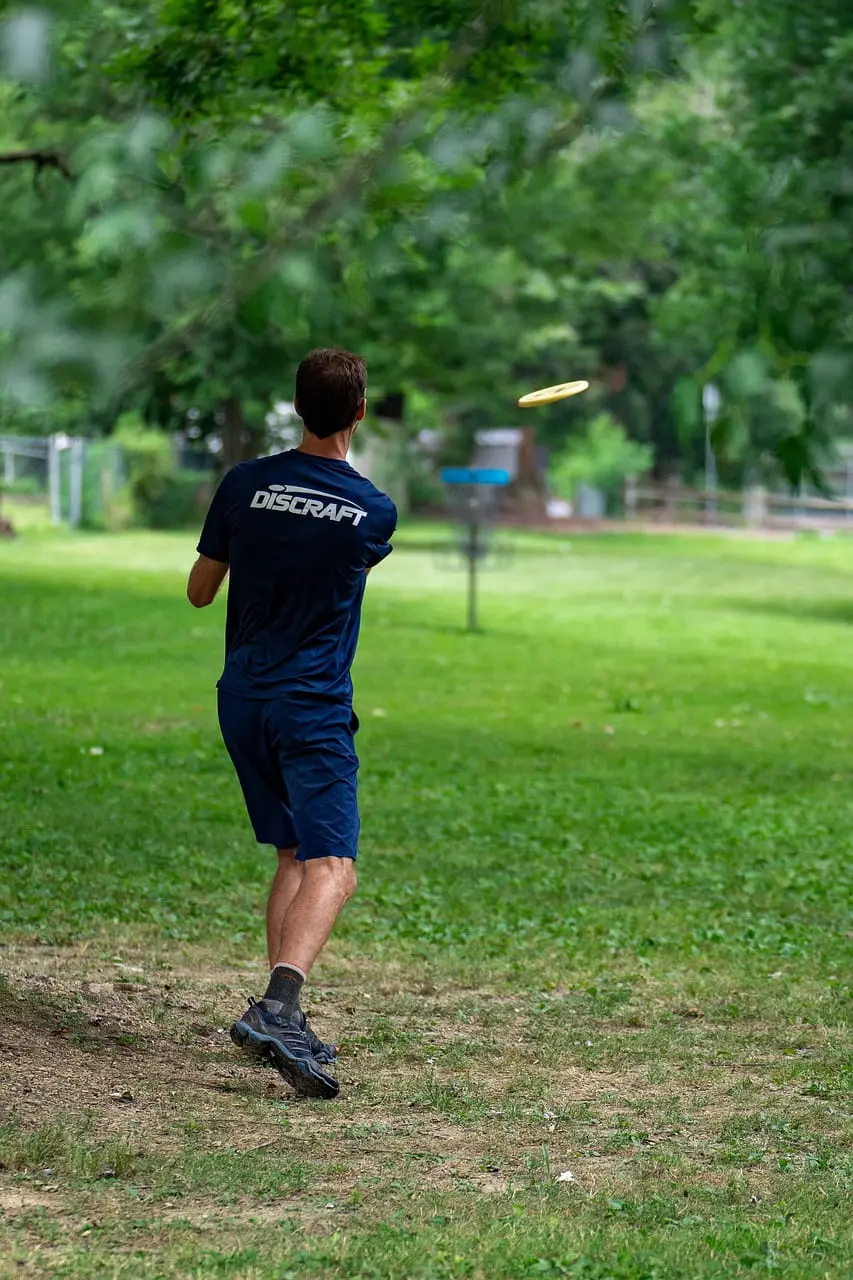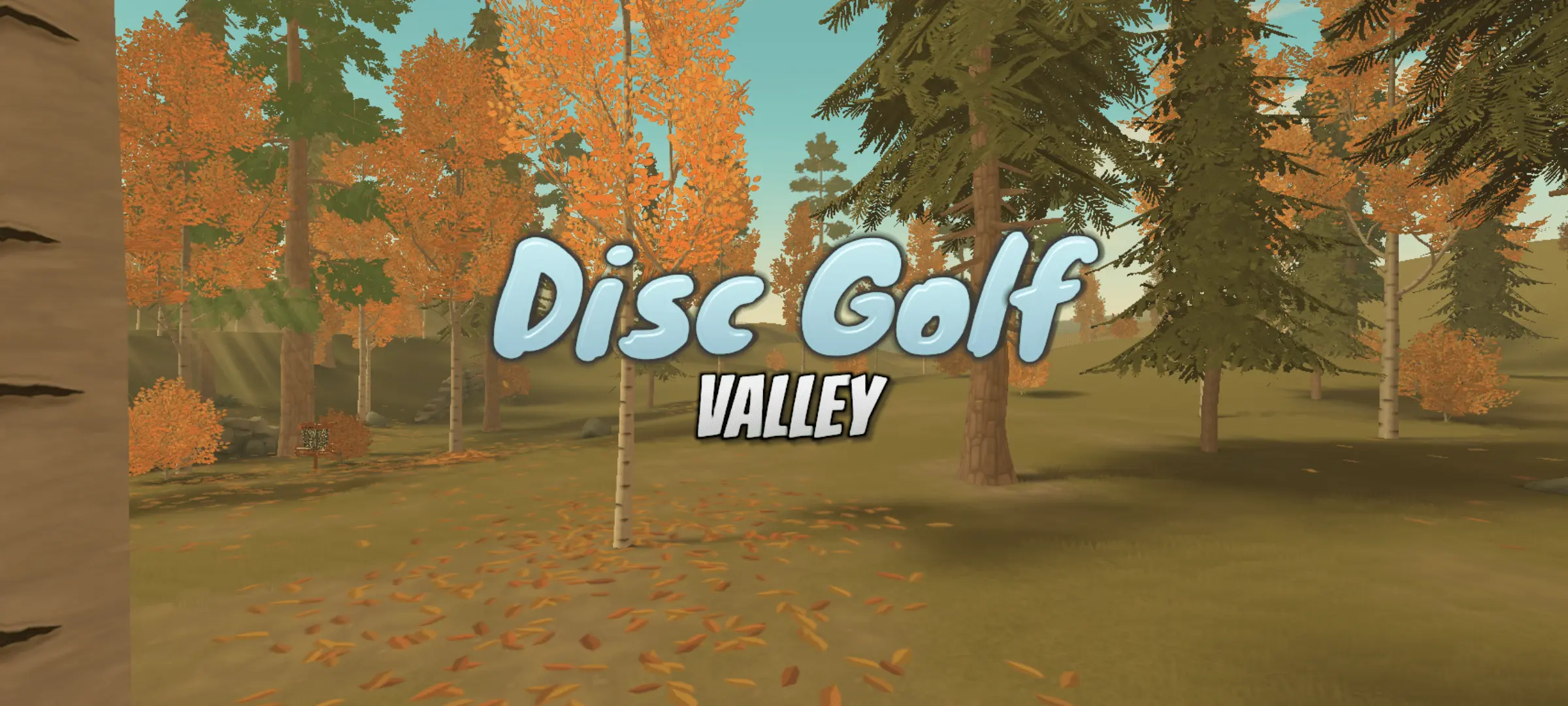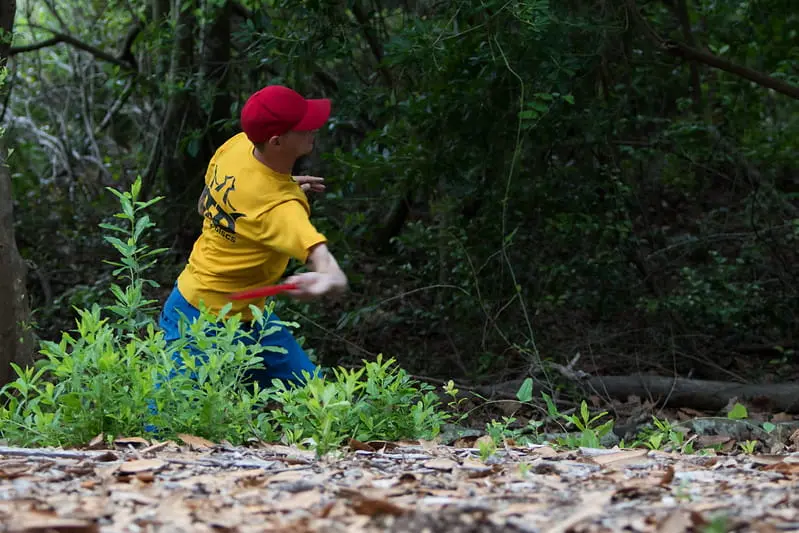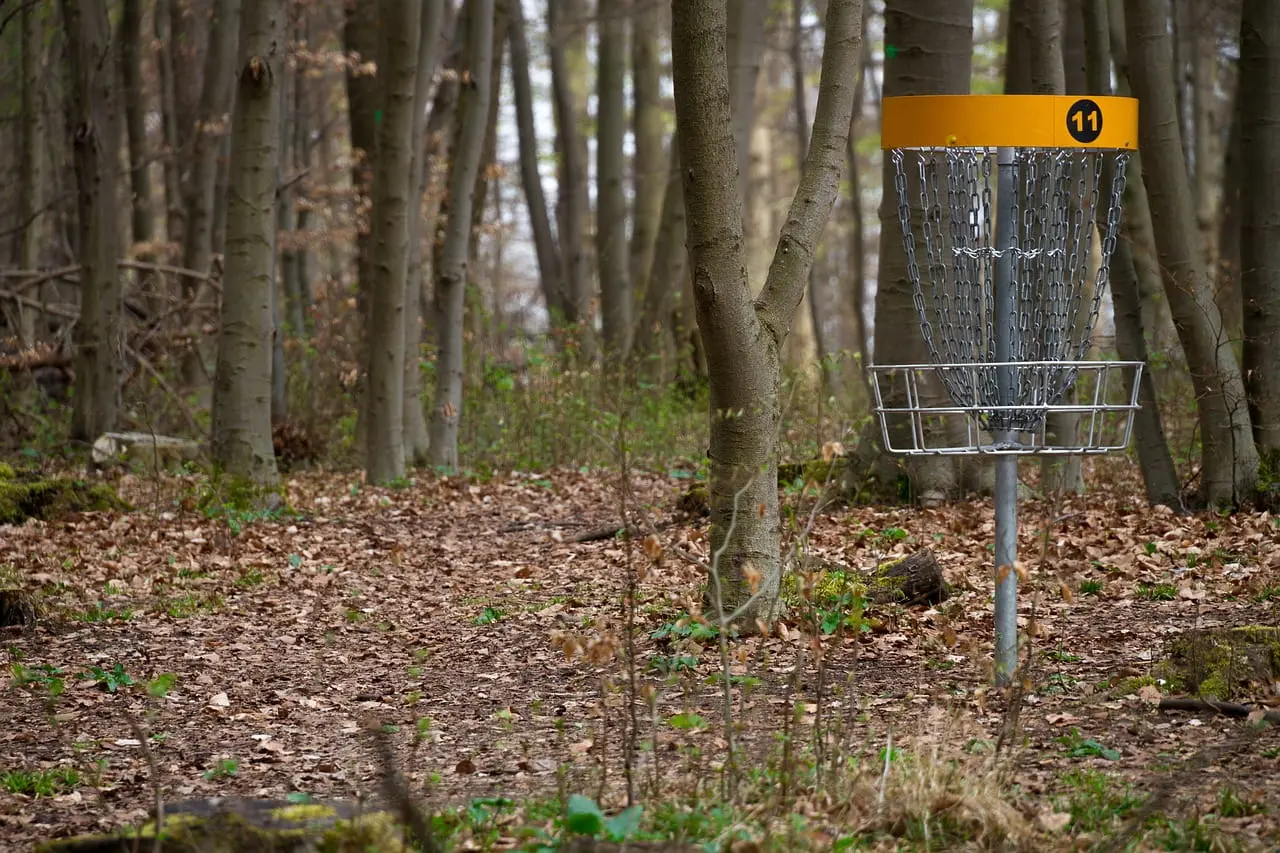Forehand Throws in Disc Golf: Mastering the Flick Shot

Published: 8/3/2023
The forehand throw, often referred to as the sidearm or flick, is an indispensable tool in the disc golfer's arsenal. Whether you're navigating tight fairways or aiming for those elusive hole-in-ones, mastering this throw can elevate your game to new heights. In this guide, we'll dive deep into the nuances of the flick shot, exploring the mechanics, techniques, and strategies that can turn you into a disc golf pro.
Laying the Foundations: Grip and Stance
Every great forehand throw starts with a solid grip and stance. For the grip, ensure your fingers are pressed firmly against the inner rim of the disc, with the thumb on top for stability. The stacked grip, where the fingers are stacked against the outer edge, offers a balance of control and power. As for the stance, stand with feet shoulder-width apart, pointing your lead foot towards the target. This foundation sets the stage for a powerful and accurate throw. The grip is vital because it determines the disc's spin and angle upon release. An inconsistent grip can result in erratic throws. Similarly, a solid stance gives you the balance needed to generate power and accuracy. It's the combination of the two that sets the tone for the throw.
The Art of the Wind-Up and Release
The wind-up and release are where the magic happens. Rotate your hips and shoulders away from the target, preparing your body to unleash its energy. As you move forward, lead with your hips, followed by your shoulders. Snap your wrist with conviction as you release the disc, aiming for a smooth and flat trajectory. Remember, it's not just about power; finesse and timing play a crucial role in achieving the perfect throw. The wind-up is all about storing energy, which is then released in a burst during the throw. Think of it as a coiled spring, ready to snap. The release, on the other hand, is about channeling that energy in the right direction. It's crucial to keep the disc flat upon release unless you're aiming for a specific flight path.
Common Mistakes and How to Avoid Them
As with any skill, mistakes are part of the learning curve. One common mistake is rolling the wrist upon release, resulting in an unpredictable disc flight. Another pitfall is not following through, which can rob your throw of its potential distance and accuracy. To avoid these, practice consistently, focusing on form over distance. Over time, muscle memory will take over, and these mistakes will become a thing of the past. Another common error is not using the lower body effectively. Many beginners rely solely on their arm strength, overlooking the power that can be generated from the hips and legs. This not only reduces the throw's power but can also lead to potential injuries. Always ensure that you're using your entire body in a synchronized motion.
Advanced Techniques: Adding Spin and Angle
Once you've mastered the basics, it's time to experiment. Adjusting the angle of release can produce different flight paths, such as the hyzer or anhyzer. Additionally, adding more spin to the disc can increase its stability in the air, allowing for more creative shots. Dive into these advanced techniques with an open mind and a willingness to learn through trial and error. These advanced techniques can be game-changers, especially in challenging terrains or windy conditions. For instance, a disc thrown with an anhyzer angle will turn to the right (for right-handed players), allowing for strategic shots around obstacles. Experimenting and mastering these techniques will give you a distinct advantage on the course.
Practice Drills to Elevate Your Forehand Throw
Practice is the key to perfection. Start with short-distance throws, focusing on form and accuracy. Gradually increase the distance as your confidence grows. Set up targets, challenge yourself with obstacles, and replicate game situations. With dedication and consistent practice, the forehand throw will become a reliable weapon in your disc golf toolkit. Consistency is key. Set aside dedicated practice sessions and focus on one aspect of the throw at a time. For example, you might spend one session solely on your grip, ensuring it's consistent with each throw. Another session might be dedicated to release angles. Breaking down the throw into components and practicing each one will lead to a more refined and effective overall technique.
Similar Posts

Boost Scores in Disc Golf Valley: Key Tips & Tricks
Published:
1 year ago

Alternative Disc Golf Formats Every Player Should Try
Published:
2 years ago

How to Throw a Forehand Hyzer Flip in Disc Golf
Published:
2 years ago

How to Conquer Disc Golf Courses: A Step-by-Step Guide to Elevating Your Game
Published:
2 years ago

Mastering the X-Step in Disc Golf: Boost Your Drives with Proper Footwork
Published:
2 years ago

Unlocking Disc Golf Power Grip Secrets for Game-Changing Throws
Published:
2 years ago